Zoom
Zoom has a wide range of features for interactive events in digital and hybrid teaching. We will show you how to use the video conferencing tool to plan and implement digital events, broadcast presentations, share content and work collaboratively online.
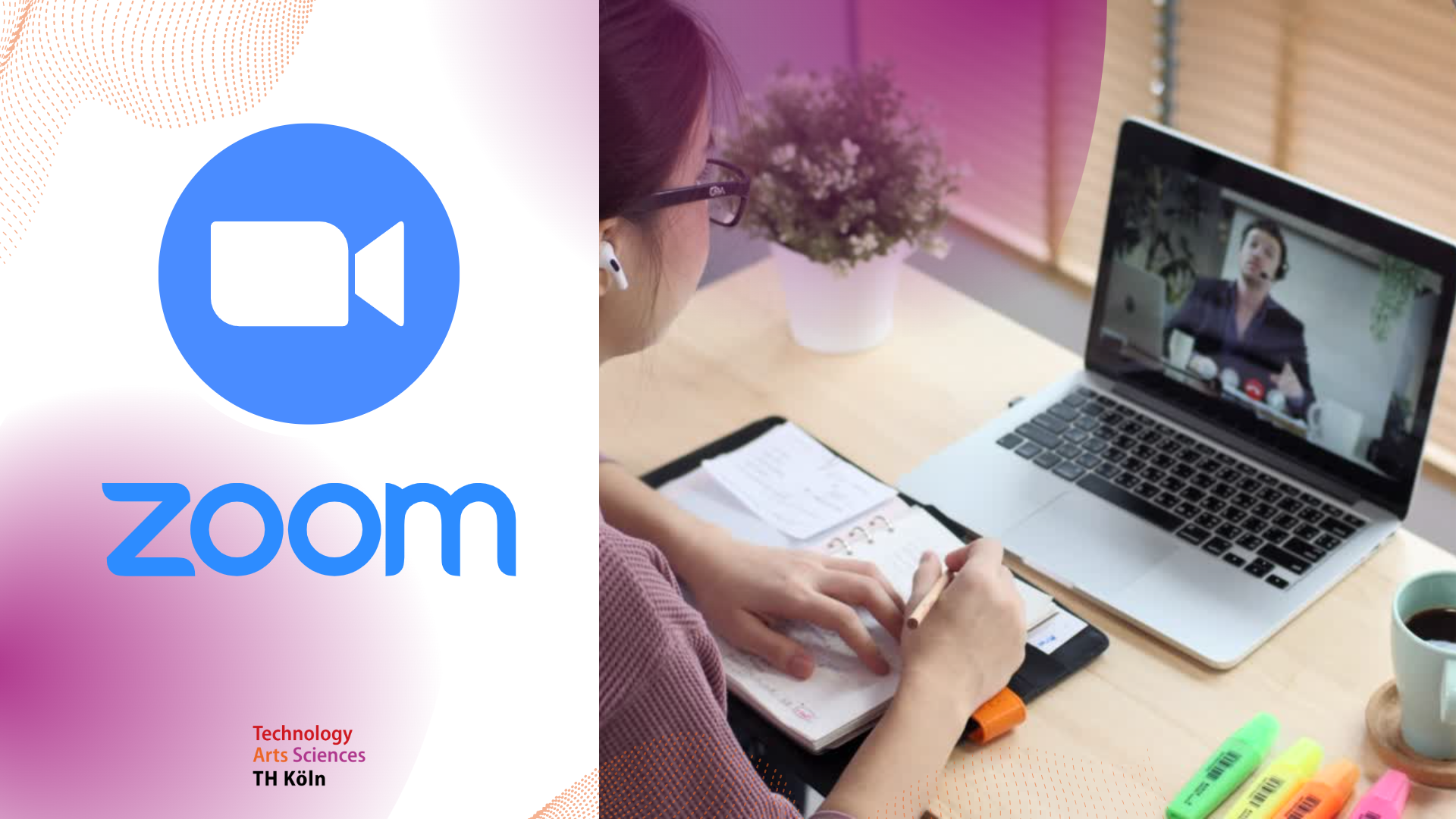
In a nutshell: What is Zoom?

FACTS
Link: https://explore.zoom.us/
Login: https://th-koeln.zoom.us/, with Campus ID
Licence: Licence of TH Köln (300 people)
Data protection: Rahmenvereinbarung TH Köln
TECHNICAL REQUIREMENTS
– Internet connection
– Laptop, smartphone, or tablet
– browser & app > facilitates participation
Zoom is a U.S. videoconferencing software program with a variety of possibilities for your digital and hybrid courses. Up to 300 people can participate over the internet with audio and video or by dialling in from anywhere in the world. Both host and participants can share their screen for presentations, videos, graphics, or texts and work together on a digital whiteboard. The group communicates by speaking (microphone) and/or by texting (private/public online chat). As a host you can create surveys to be conducted during your event, and so-called breakout rooms can be made available for group work.
Data Protection & Accessibility
Zoom is compliant with the DSGVO at TH Köln. Data storage has been carried out on servers with locations in Germany since March 2023. More information on data protection can be found in the Zoom data processing notes (German). Information on accessibility and Zoom can be found here.
Range of Features
- Audio and videoconferencing (incl. dialling in by phone)
- Digital whiteboard (for collaborative work)
- Chat (1-on1 or group chats)
- Breakout rooms for teamwork within a meeting
- Screen sharing
- Recording and and exporting of meeting as video file
- Surveys with single-choice and multiple-choice questions
- End-to-end encryption
Uses
- Lecture
- Seminar
- Group work
- Consultation hours
- Exams
- Unsuitable for confidential content
- Unsuitable for counselling
Step by Step
Zoom can be used in a web browser or as a desktop client (app).
Using the web browser
- Sign in on TH Köln’s login page via single sign-on with your campusID.
Using the desktop client
- Once you have downloaded and installed the desktop app, you will see the Sign In Button and the Sign in with SSO button.
- From now on you will also be able to sign in to Zoom using your campusID on TH Köln’s login page.
- Signing in with your Facebook or Google account is also possible.
- If you are already using the Zoom desktop client with a free account, you will have to go to Settings and sign out in order to sign in again with your TH Köln ID.
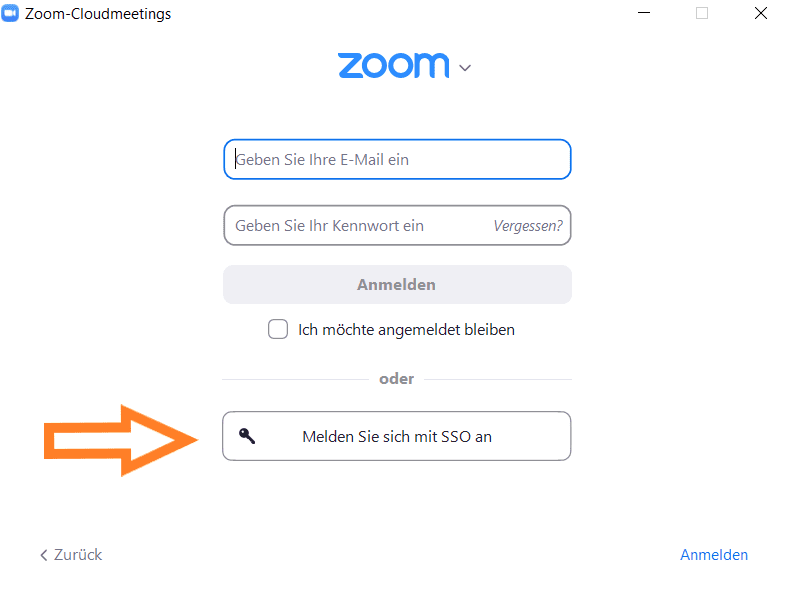
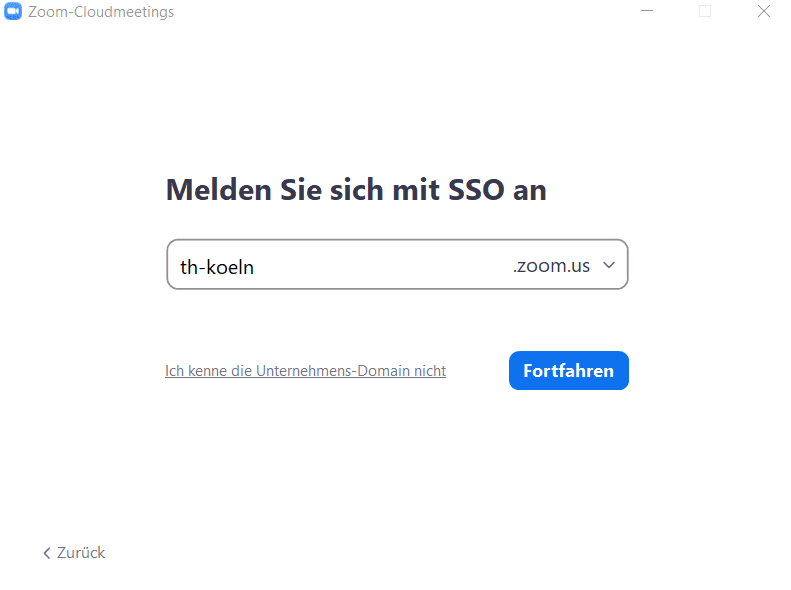
- After signing in on TH Köln’s Zoom website or in the desktop client, you will be able to start a meeting by clicking on HOST A MEETING. Or you can set up a meeting for a later date by clicking on SCHEDULE A MEETING.

- The Zoom desktop client and TH Köln’s Zoom website function the same way, only the buttons and their labeling look different.
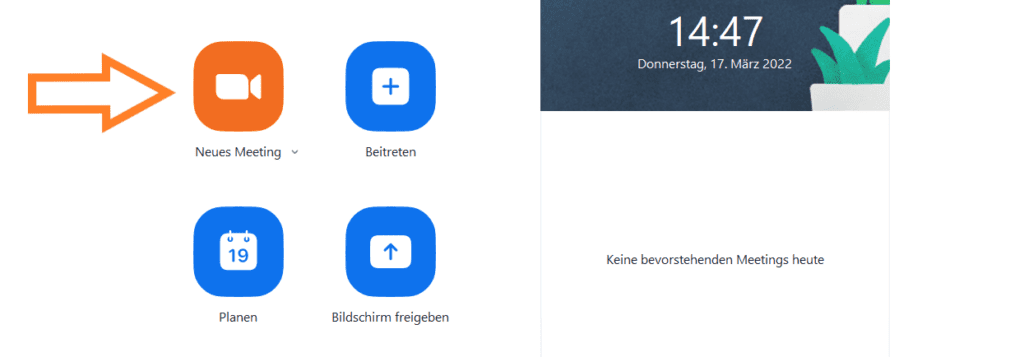
Scheduled meetings
- If you have scheduled a meeting for later, you will be shown an overview after saving.
- There you can edit the meeting invitation. Copy Invitation shows you what it will look like to invitees.
- Send the invitation to participants by email or via ILIAS.
Instant meetings
- An instant meeting is launched when you click on New Meeting.
- To obtain the invitation template for the room, click on Invite at the bottom of the control panel and then on the Copy invitation button.

Devices
- Start your event with Zoom using a laptop, smartphone, or tablet. Most devices have a built-in camera and microphone, whose quality is quite sufficient for the purpose.
Technology
- Make sure your devices have the latest drivers installed. A headset with a built-in microphone can enhance sound quality and speech intelligibility.
You can change the individual settings for your events after you have started your meeting (click on your profile picture then select the cogwheel). For example:
- Video allows you to mirror your camera image, touch up your appearance, or adjust your image to dim lighting; though the software cannot compensate for a dark room.
- Audio will let you test your microphone and speakers—you can also have background noise automatically suppressed.
- Background & Filters lets you blur your background or upload a virtual background: for instance, that of TH Köln.
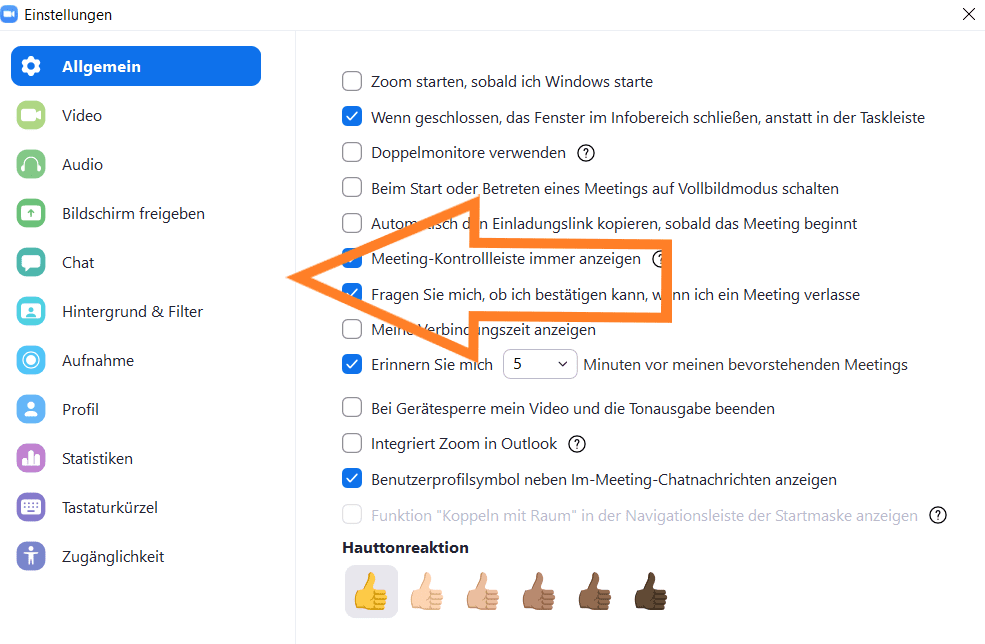
Useful Tips
Let less experienced students test Zoom!
Students can join the test meeting room https://th-koeln.zoom.us/test
to test out their own equipment before the actual meeting.
Any questions?
Feel free to contact us by mail to lehrpfade@th-koeln.de!
Hints
Links & Literature
- Videokonferenzen und Aufzeichnungen mit Zoom (Tipps der TU Hamburg)
- Videokonferenzen mit Zoom (Wiki der Fernuniversität Hagen)
- Erste Schritte und Grundeinstellungen (Support des Herstellers)
- Hilfevideos (YouTube-Kanal des Herstellers)
- Durchführung von Videokonferenzen (Empfehlungen der Deutschen Initiative für Netzwerkinformation e.V.)
-

M. A., research assistant at the Center for Academic Development at TH Köln. Responsible for the area of e-assessment. Member of the network Gesellschaft für Medienpädagogik und Kommunikationskultur (GMK). Main areas of work: Coordination, conception, consulting and training in the context of e-examinations, examination didactics and related platforms (ILIAS, EvaExam), coordination of the expert group on simulations and learning games in teaching.



